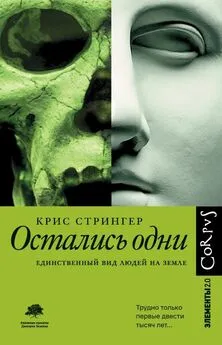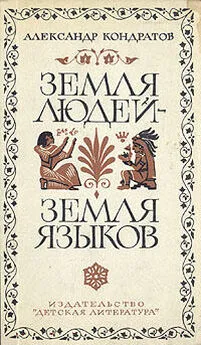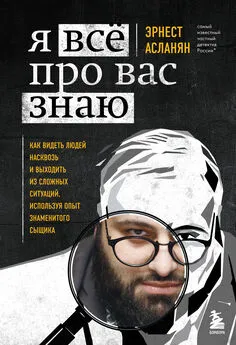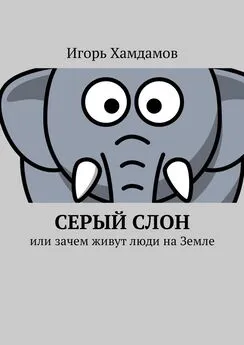Крис Стрингер - Остались одни. Единственный вид людей на земле
- Название:Остались одни. Единственный вид людей на земле
- Автор:
- Жанр:
- Издательство:Литагент Corpus
- Год:2021
- Город:Москва
- ISBN:978-5-17-982912-6
- Рейтинг:
- Избранное:Добавить в избранное
-
Отзывы:
-
Ваша оценка:
Крис Стрингер - Остались одни. Единственный вид людей на земле краткое содержание
Один из ведущих мировых специалистов, британский антрополог Крис Стрингер, тщательно собирает гигантский пазл, чтобы показать нам цельную картину: что на сегодняшний день известно науке о нас и о других представителях рода Homo, чего мы достигли в изучении своего эволюционного пути и куда движемся по нему дальше.
В формате PDF A4 сохранён издательский дизайн.
Остались одни. Единственный вид людей на земле - читать онлайн бесплатно ознакомительный отрывок
Интервал:
Закладка:
A. Revedin, B. Aranguren, R. Becattini, L. Longo, E. Marconi, M. Mariotti Lippi, N. Skakun, A. Sinitsyn, E. Spiridonova, J. Svoboda. “Thirty-thousand-year-old evidence of plant food processing”. Proceedings of the National Academy of Sciences USA 107.44. 2010, 18815–18819.
M. P. Richards, P. B. Pettitt, M. C. Stiner, E. Trinkaus. “Stable isotope evidence for increasing dietary breadth in the European Mid-Upper Paleolithic”. Proceedings of the National Academy of Sciences USA 98. 2001, 6528–6532.
M. J. Rossano. “Making friends, making tools, and making symbols”. Current Anthropology 51. 2010, 89–98.
J. J. Shea. “The Origins of lithic projectile point technology: Evidence from Africa, the Levant and Europe”. Journal of Archaeological Science 33. 2006, 823–846.
J. J. Shea, M. L. Sisk. “Complex projectile technology and Homo sapiens dispersal into western Eurasia”. PalaeoAnthropology. 2010, 100–122.
O. Soffer. “Ancestral lifeways in Eurasia – the Middle and Upper Paleolithic records”. In M. H. Nitecki, D. V. Nitecki, eds. Origins of Anatomically Modern Humans , 01–19. Plenum Press, New York, 1994.
O. Soffer, J. M. Adovasio, J. S. Illingworth, H. A. Amirkhanov, N. D. Praslov, M. Street. “Palaeolithic perishables made permanent”. Antiquity 74. 2000, 812–821.
J. D. Sommer. “The Shanidar IV ‘Flower Burial’: A re-evaluation of Neanderthal burial ritual”. Cambridge Archaeological Journal 9. 1. 1999, 127–129.
M. C. Stiner. “Thirty years on the ‘Broad Spectrum Revolution’ and paleolithic demography”. Proceedings of the National Academy of Sciences USA 98. 2001, 6993–6996.
J. A. Svoboda. “On modern human penetration to northern Eurasia: The multiple advances hypothesis”. In P. Mellars, K. Boyle, O. Bar-Yosef, C. Stringer, eds. Rethinking the Human Revolution , 329–340. McDonald Institute for Archaeological Research, Cambridge, 2007.
T. Taylor. The Artificial Ape . Macmillan, Basingstoke, 2010.
N. Teyssandier. “Revolution or evolution: The emergence of the Upper Paleolithic in Europe”. World Archaeology 40. 4. 2008, 493–519.
N. Teyssandier, F. Bon, J.-G. Bordes. “Within projectile range: Some thoughts on the appearance of the Aurignacian”. Journal of Anthropological Research 66. 2. 2010, 209–229.
M. Tomasello, M. Carpenter, J. Call, T. Behne, H. Moll. “Understanding and sharing intentions: The origins of cultural cognition”. Behavioral and Brain Sciences 28. 2005, 675–735.
J. Tooby, L. Cosmides. “Conceptual foundations of evolutionary psychology”. In D. M. Buss, ed. The Handbook of Evolutionary Psychology , 5–67. Wiley, Hoboken, NJ, 2005.
M. A. Toups, A. Kitchen, J. E. Light, D. L. Reed. “Origin of clothing lice indicates early clothing use by anatomically modern humans in Africa”. Molecular Biology and Evolution 28. 1. 2011, 29–32.
E. Trinkaus. “Late Pleistocene adult mortality patterns and modern human establishment”. Proceedings of the National Academy of Sciences USA 108. 2011, 1267–1271.
E. Trinkaus. “Neanderthal mortality patterns”. Journal of Archaeological Science 22. 1995, 121–142.
E. Trinkaus. The Shanidar Neanderthals . Academic Press, London 1983.
E. Trinkaus, J. Svoboda, eds. Early Modern Human Evolution in Central Europe: The People of Dolni Vĕstonice and Pavlov . Oxford University Press, Oxford, 2006.
R. White. “Systems of personal ornamentation in the Early Upper Palaeolithic: Methodological challenges and new observations”. In P. Mellars, K. Boyle, O. Bar-Yosef, C. Stringer, eds. Rethinking the Human Revolution , 287–302. McDonald Institute for Archaeological Research, Cambridge, 2007.
D. S. Wilson, E. O. Wilson. “Evolution ‘for the good of the group’”. American Scientist 96. 5. 2008, 380–389.
R. Wrangham. Catching Fire: How Cooking Made Us Human . Basic Books, New York, 2009.
R. Wrangham, R. Carmody. “Human adaptation to the control of fire”. Evolutionary Anthropology 19. 2010, 187–199.
J. Zilhao, D. E. Angelucci, E. Badal-Garcia, F. d’Errico, F. Daniel, L. Dayet, K. Douka, T. G. Higham, M. J. Martinez-Sanchez, R. Montes-Bernardez et al. “Symbolic use of marine shells and mineral pigments by Iberian Neanderthals”. Proceedings of the National Academy of Sciences USA 107. 2009, 1023–1028.
C. P. E. Zollikofer, M. S. Ponce de Leon, B. Vandermeersch, F. Leveque. “Evidence for interpersonal violence in the St. Cesaire Neanderthal”. Proceedings of the National Academy of Sciences USA 99. 2002, 6444–6448.
G. J. Adcock, E. S. Dennis, S. Easteal, G. A. Huttley, L. S. Jermlin, W. J. Peacock, A. Thorne. “Mitochondrial DNA sequences in ancient Australians: Implications for modern human origins”. Proceedings of the National Academy of Sciences USA 98. 2001, 537–542.
C. J. Bae. “The Late Middle Pleistocene hominin fossil record of Eastern Asia: Synthesis and review”. Yearbook of Physical Anthropology 53. 2010, 75–93.
H.-J. Bandelt, V. Macaulay, M. Richards, eds. Human mitochondrial DNA and the evolution of Homo sapiens. Springer-Verlag, Berlin/Heidelberg, 2006.
P. Bowler. Evolution: The History of an Idea . University of California Press, Berkeley, 2009.
P. Brotherton, J. J. Sanchez, A. Cooper, P. Endicott. “Preferential access to genetic information from endogenous hominin ancient DNA and accurate quantitative SNPtyping via SPEX”. Nucleic Acid Research 38. 2009, 1–12.
C. D. Bustamante, B. M. Henn. “Shadows of early migrations”. Nature 468. 2010, 1044–1045.
R. Caspari. “1918: Three perspectives on race and human variation”. American Journal of Physical Anthropology 139. 1. 2009, 5–15.
B. Charlesworth. “Fundamental concepts in genetics: Effective population size and patterns of molecular evolution and variation”. Nature Reviews Genetics 10. 3. 2009, 195–205.
J. Chiaroni, P. A. Underhill, L. L. Cavalli-Sforza. “Y chromosome diversity, human expansion, drift and cultural evolution”. Proceedings of the National Academy of Sciences USA 106. 2009, 20174–20179.
G. Coop, K. Bullaughey, F. Luca, M. Przeworski. “The timing of selection at the human FOXP2 gene”. Molecular Biology and Evolution 25. 2008, 1257–1259.
A. Cooper, A. Rambaut, V. Macaulay, E. Willerslev, A. Hansen, C. Stringer. “Human origins and ancient human DNA”. Science 292. 2001, 1655–1656.
F. Cruciani, B. Trombetta, A. Massaia, G. Destro-Bisol, D. Sellitto, R. Scozzari. “A revised root for the human Y chromosomal phylogenetic tree: The origin of patrilineal diversity in Africa”. American Journal of Human Genetics 88. 2011, 814–818.
M. Currat, L. Excoffier. “Strong reproductive isolation between humans and Neanderthals inferred from observed patterns of introgression”. Proceedings of the National Academy of Sciences USA. 2011. doi:10.1073/pnas.1107450108.
C. Duarte, J. Mauricio, P. B. Pettitt, P. Souto, E. Trinkaus, H. van der Plicht, J. Zilhao. “The early Upper Paleolithic human skeleton from the Abrigo do Lagar Velho. Portugal and modern human emergence in Iberia”. Proceedings of the National Academy of Sciences USA 96. 1999, 7604–7609.
H. J. H. Edgar. “Biohistorical approaches to ‘race’ in the United States: Biological distances among African Americans, European Americans, and their ancestors”. American Journal of Physical Anthropology 139. 1. 2009, 58–67.
H. J. H. Edgar, K. L. Hunley. “Race reconciled? How biological anthropologists view human variation”. American Journal of Physical Anthropology 139. 1. 2009, 1–4.
P. Endicott, S. Ho, M. Metspalu, C. Stringer. “Evaluating the mitochondrial timescale of human evolution”. Trends in Ecology and Evolution 24. 2009, 515–521.
P. Endicott, S. Ho, C. Stringer. “Using genetic evidence to evaluate four palaeoanthropological hypotheses for the timing of Neanderthal and modern human origins”. Journal of Human Evolution 59. 2010, 87–95.
V. Eswaran, H. Harpending, A. Rogers. “Genomics refutes an exclusively African origin of humans”. Journal of Human Evolution 49. 2005, 1–18.
A. Gibbons. “A Denisovan legacy in the immune system?” Science 333. 2011, 1086.
A. Gibbons. “Who were the Denisovans?” Science 333. 2011, 1084–1087.
C. C. Gravlee. “How race becomes biology: Embodiment of social inequality”. American Journal of Physical Anthropology 139. 1. 2009, 47–57.
R. E. Green, A. W. Briggs, J. Krause, K. Prufer, H. A. Burbano, M. Siebauer, M. Lachmann, S. Paabo. “The Neandertal genome and ancient DNA authenticity”. EMBO. 2009, 1–9.
R. E. Green, J. Krause, A. W. Briggs et al. “A draft sequence of the Neandertal genome”. Science 328. 2010, 710–722.
R. E. Green, J. Krause, S. E. Ptak, A. W. Briggs, M. T. Ronan, J. F. Simons, L. Du et al. “Analysis of one million base pairs of Neanderthal DNA”. Nature 444. 2006, 330–336.
R. E. Green, A.-S. Malaspinas, J. Krause, A. W. Briggs, P. L. F. Johnson, C. Uhler, M. Meyer, J. M. Good, T. Maricic, U. Stenzel, K. Prufer et al. “A complete Neandertal mitochondrial genome sequence determined by high-throughput sequencing”. Cell 134. 2008, 416–426.
G. Hudjashov, T. Kivisild, P. A. Underhill, P. Endicott, J. J. Sanchez, A. A. Lin, P. Shen et al. “Revealing the prehistoric settlement of Australia by Y chromosome and mtDNA analysis”. Proceedings of the National Academy of Sciences USA 104. 2007, 8726–8730.
J. F. Hughes, H. Skaletsky, T. Pyntikova, T. A. Graves, S. K. van Daalen, P. J. Minx, R. S. Fulton, S. D. McGrath, D. P. Locke et al. “Chimpanzee and human Y chromosomes are remarkably divergent in structure and gene content”. Nature 463. 7280. 2010, 536–539.
K. L. Hunley, M. E. Healy, J. C. Long. “The global pattern of gene identity variation reveals a history of long-range migrations, bottlenecks, and local mate exchange: Implications for biological race”. American Journal of Physical Anthropology 139. 1. 2009, 35–46.
N. G. Jablonski, G. Chaplin. “The evolution of human skin coloration”. Journal of Human Evolution 39. 2000, 57–106.
N. G. Jablonski, G. Chaplin. “Human skin pigmentation as an adaptation to UV radiation”. Proceedings of the National Academy of Sciences USA 107, supplement 2. 2010, 8962–8968.
C. Jolly. “A proper study for mankind: Analogies from the Papionin monkeys and their implications for human evolution”. American Journal of Physical Anthropology , supplement 33. 2001, 177–204.
T. M. Karafet, F. L. Mendez, M. B. Meilerman, P. A. Underhill, S. L. Zegura, M. F. Hammer. “New binary polymorphisms reshape and increase resolution of the human Y chromosomal haplogroup tree”. Genome Research 18. 5. 2008, 830–838.
J. Krause, C. Lalueza-Fox, L. Orlando, W. Enard, R. E. Green, H. A. Burbano, J.-J. Hublin et al. “The derived FOXP2 variant of modern humans was shared with Neandertals”. Current Biology 17. 21, 1908–12.
M. Krings, A. Stone, R. W. Schmitz, H. Krainitzki, M. Stoneking, S. Paabo. “Neanderthal DNA sequences and the origin of modern humans”. Cell 90. 1997, 19–30.
Читать дальшеИнтервал:
Закладка:










